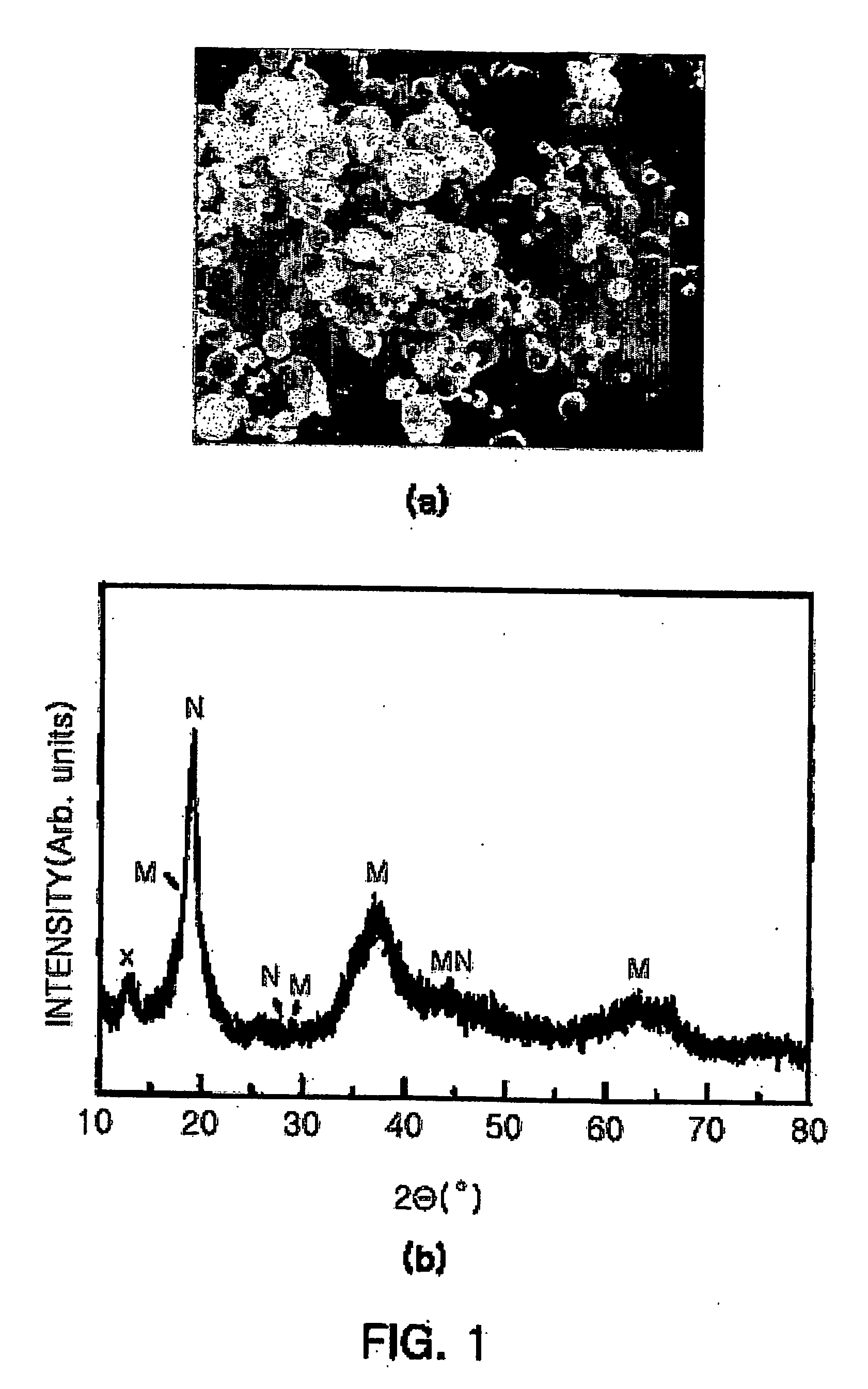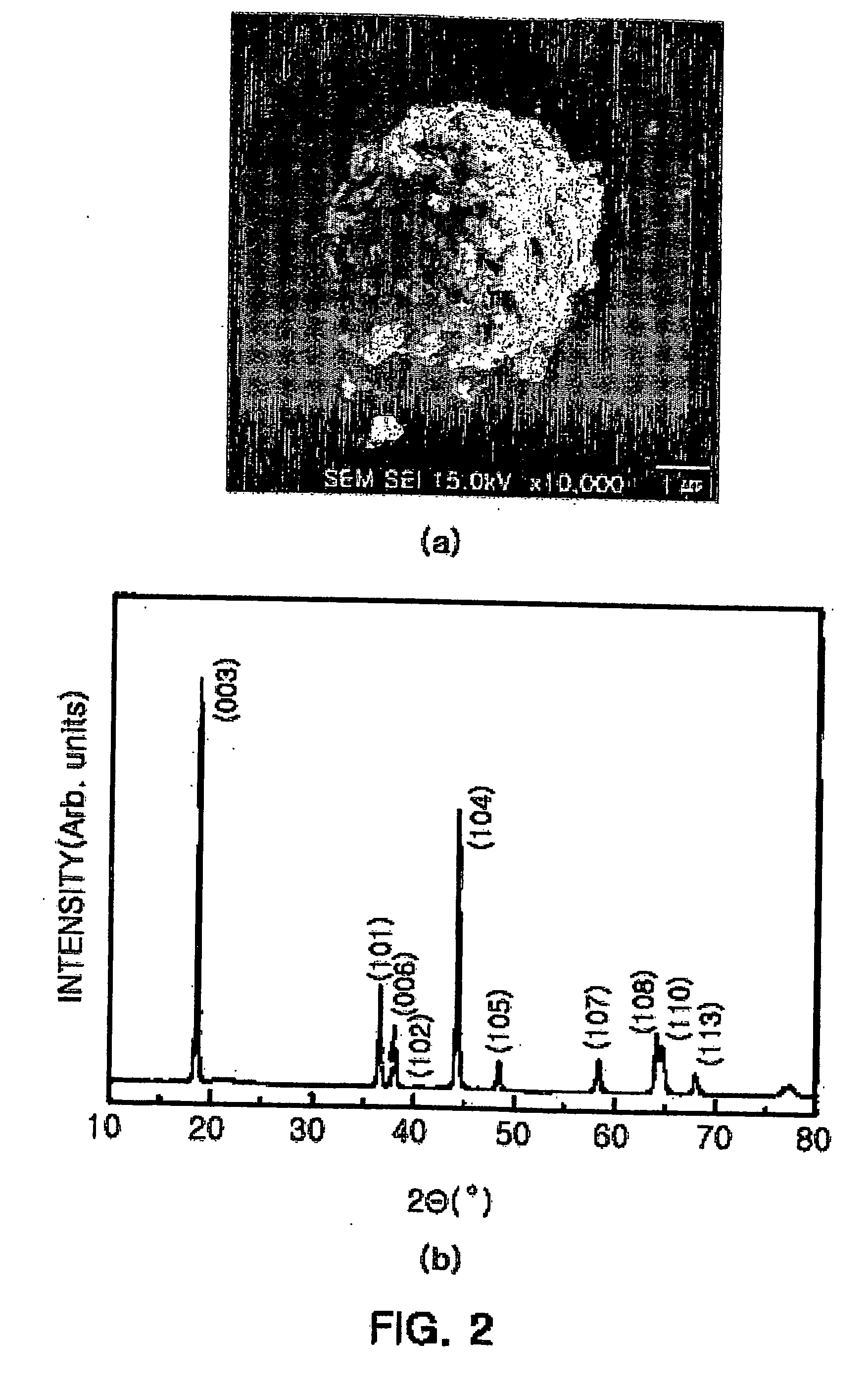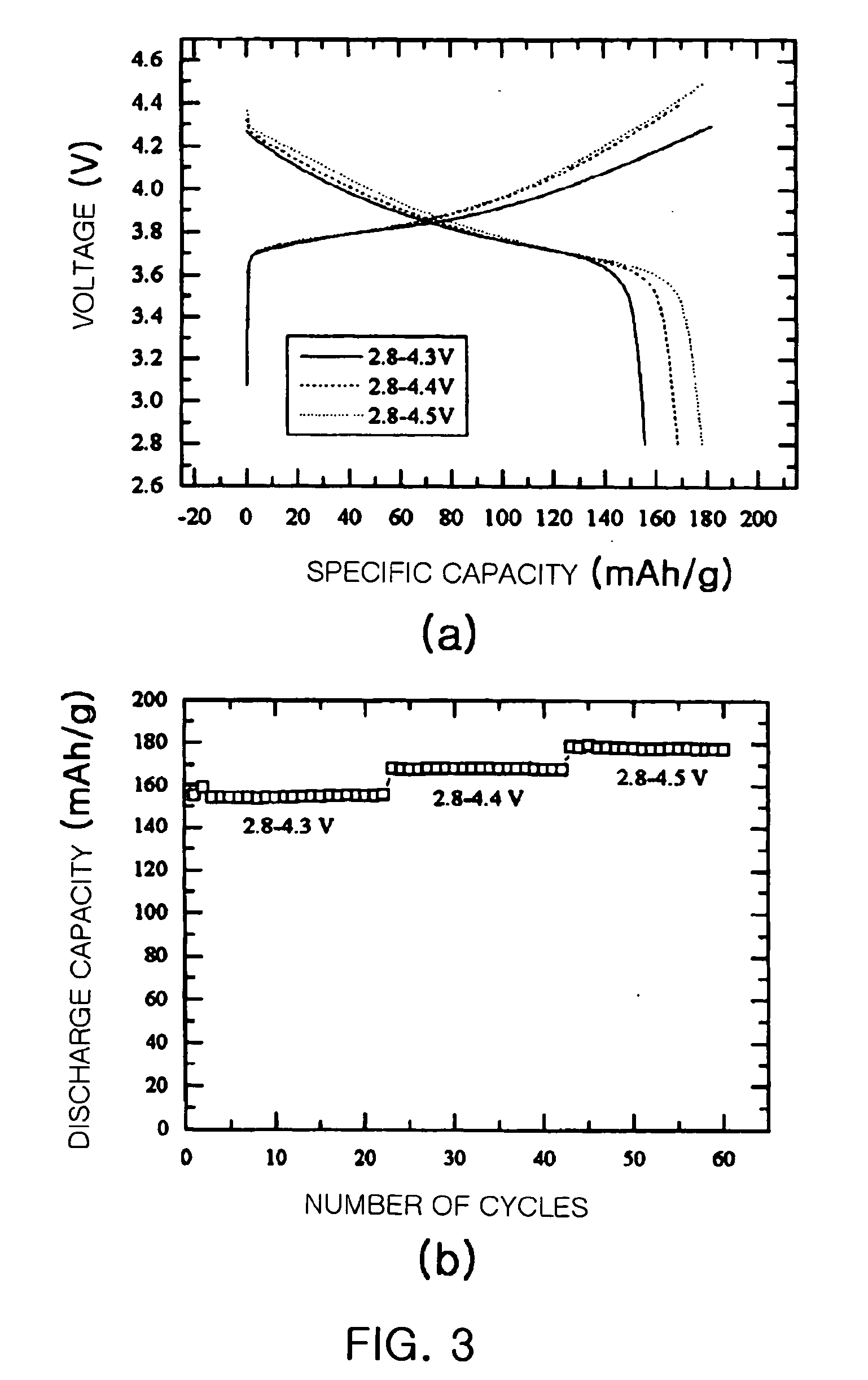Method for producing lithium composite oxide for use as positive electrode active material for lithium secondary batteries
a lithium secondary battery and composite oxide technology, applied in the direction of nickel compounds, manganates/permanentates, cell components, etc., can solve the problems of inability to put into practical use, inability to meet the requirements of use, etc., to achieve excellent charge-discharge cycle characteristics and capacity maintenance characteristics.
- Summary
- Abstract
- Description
- Claims
- Application Information
AI Technical Summary
Benefits of technology
Problems solved by technology
Method used
Image
Examples
example 2
[0041] In this example, three lithium coin cells were manufactured using the layer-structured composite oxide (Li(Ni1 / 2Mn1 / 2)O2) produced in Example 1 as a positive electrode active material, and then the performance of the coin cells was evaluated.
[0042] First, 20 mg of Li(Ni1 / 2Mn1 / 2)O2 was homogeneously mixed with 8 mg of Teflon-acetylene black (TAB) and 4 mg of graphite, uniformly pressed on a stainless steel mesh under pressure of 1 ton, and dried at 100° C. to fabricate a positive electrode.
[0043] The positive electrode fabricated above, a negative electrode (Cyprus Foote Mineral) composed of a lithium foil as counter electrode, a separator composed of a porous polyethylene membrane (Celgard LLC.) having a thickness 25 μm, and a solution of 1M LiPF6 in a mixed solvent of ethylene carbonate (EC) and dimethyl carbonate (DEC) (1:1 (v / v)) as an electrolyte, were used to manufacture three 2032 coin cells in which the separator was interposed between the positive electrode and the ...
example 3
[0047] In order to produce Li(Ni1 / 2Mn1 / 2)O2 for use as a positive electrode active material for lithium secondary batteries, first, nickel nitrate hexahydrate (Ni(NO3).6H2O, Aldrich, U.S.A), cobalt nitrate hexahydrate (Co(NO3).6H2O, Aldrich, U.S.A) and manganese nitrate tetrahydrate (Mn(NO3).4H2O, Sigma, U.S.A) were quantified and mixed so that the stoichiometric ratio of Ni, Co and Mn was 1:1:1, and then the resulting mixture was dissolved in distilled water. 20% of citric acid monohydrate (C6H8O7.H2O, Aldrich, U.S.A) as a chelating agent, based on the total metal ions, was added to the solution, and stirred to prepare a mixed solution.
[0048] Subsequently, the mixed solution was sprayed using an ultrasonic vibrator operating at 1.7 MHz to form liquid droplets in the same manner as in Example 1, and passed through a vertical pyrolysis furnace at 500° C. to obtain an intermediate composite oxide (Ni1 / 3Co1 / 3Mn1 / 3)O2+y as a powder.
[0049] The scanning electron microscopy (SEM) image o...
example 4
[0054] In this example, four lithium coin cells were manufactured using the layer-structured composite oxide (Li(Ni1 / 3Co1 / 3Mn1 / 3)O2) produced in Example 3 as a positive electrode active material, and then the performance of the lithium coin cells was evaluated.
[0055] The charging and discharging of the four coin cells were performed under various voltage ranges of 2.8V˜4.3V, 2.8˜4.4V, 2.8˜4.5V and 2.8˜4.6V, respectively, at a current density of 0.2 mA / cm2 at 30° C. using an electrochemical analysis apparatus (Toyo, Japan, Toscat 3000U).
[0056] The measurement results are shown in FIGS. 6a and 6b. FIG. 6a is a graph showing the voltage-current characteristic (V-I characteristic) of the coin cells manufactured using the lithium composite oxide Li(Ni1 / 3Co1 / 3Mn1 / 3)O2 as a positive electrode active material. FIG. 6b is a graph showing the cycle life characteristics of the coin cells.
[0057] Referring to FIG. 6a, the voltage curves of the four coin cells under different voltage ranges we...
PUM
 Login to View More
Login to View More Abstract
Description
Claims
Application Information
 Login to View More
Login to View More - R&D
- Intellectual Property
- Life Sciences
- Materials
- Tech Scout
- Unparalleled Data Quality
- Higher Quality Content
- 60% Fewer Hallucinations
Browse by: Latest US Patents, China's latest patents, Technical Efficacy Thesaurus, Application Domain, Technology Topic, Popular Technical Reports.
© 2025 PatSnap. All rights reserved.Legal|Privacy policy|Modern Slavery Act Transparency Statement|Sitemap|About US| Contact US: help@patsnap.com



